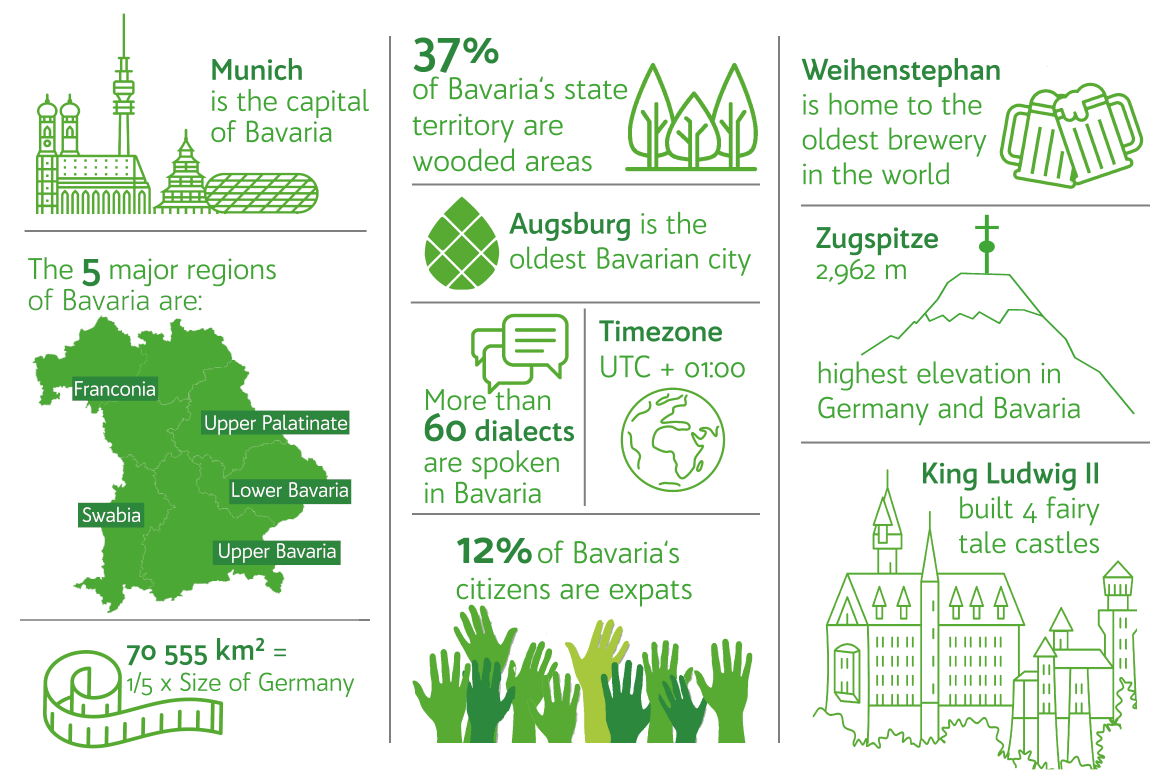
Greetings
Whilst "Grüss Gott" is our most usual form of greeting, "Servus" is also a very traditional, common and flexible word that can be used either as "hi" or as "goodbye".
Community, family, innovation, nature, tradition, equality, identity—Bavaria is representative of all of these things and more. It is a wonderful place to live and work, and the Bavarian way of life is rich and rewarding. Get ready to call Bavaria “home.”

Regardless of where you choose to settle, there will be no shortage of things for you to see and do. Bavaria’s cities are filled with iconic architecture and monuments that speak of each city’s fascinating history—histories that you’ll encounter every day as you go about life in your new home.
Bavarian food is hearty and delicious, with many excellent meat and potato-based dishes. Vegetarians will especially love the different types of dumplings, white asparagus, cheese from the Alps, wild mushrooms, and the many sweet dishes the region is renowned for. The best place for a good traditional meal is Bräuerei or Wirtshaus (pub), or a beer garden. Below is a small selection of foods that it would be a shame not to try.